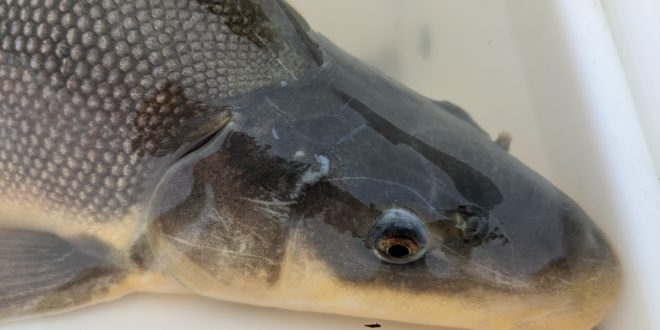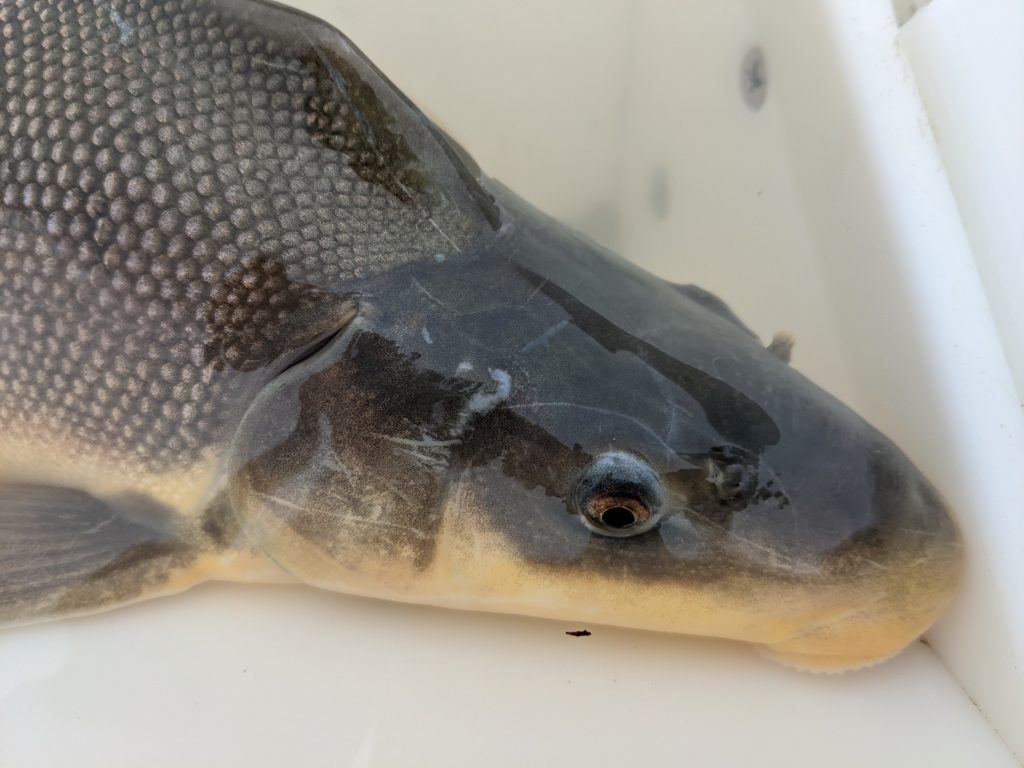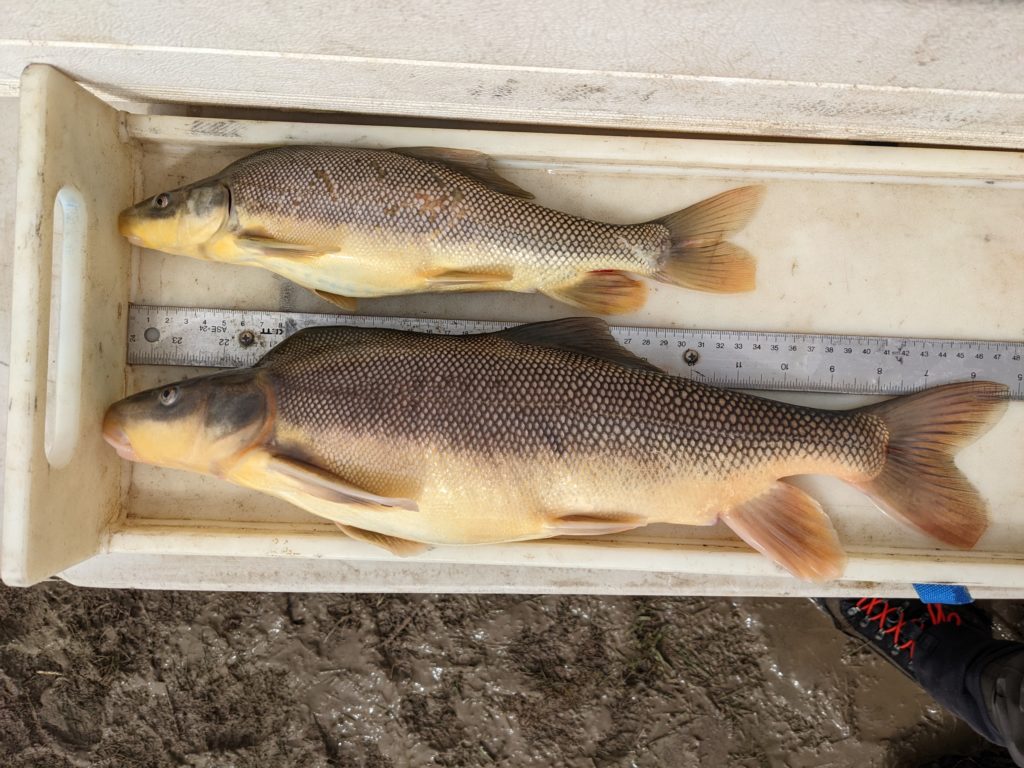The DGF is collaborating with American Southwest Ichthyological Researchers to try something new in the San Juan River. Through technology, we’ve developed Passive Integrated Transponder tag antennas (PIT tags for short). A PIT tag is a small device that uses radio frequencies to communicate a unique code from an antenna when paired with a reader, similar to the way microchips are used to keep track of our dogs and cats. These PIT tags are being tested in their field debut for the detection and study of our SGCN.
Which is the first species that will be studied with PIT tags? That would be the razorback sucker (Xyrauchen texanus), a member of the suckerfish family (Catostomidae). It’s a critically endangered species native to the southwest and (formerly) Mexico.
Efforts to preserve the razorback sucker have been led by the San Juan River Basin Recovery and Implementation Program (SJRIP for short). These efforts have included the stocking of the San Juan River with hatchery-reared suckerfish. For the first time, their spawning behavior can be tracked in detail thanks to the PIT tags.
Most of the razorback suckers in the San Juan River have been stocked from hatcheries. After being hatched, they are PIT tagged prior to being released. This allows our researchers to track their survival, growth and movement after stocking.
The PIT tag readers used in this research can detect a unique tag from a great distance as they float over the fish and record their tag ID, time and location. Understanding the spawning locations of suckerfish to this level of detail is critical for managers to ensure their successful recovery.
Excitement is growing as PIT tags can even detect individual razorback suckers in spawning groups. Our San Juan Native Biologist, Adam Barkalow, confirms this behavior by discovering razorback sucker embryos where the PIT tags indicated the suckerfish were grouping. By identifying spawning fish and their habitats, PIT tags are providing necessary insights into their behavior and preferences.
This study revealed a surprisingly substantial population of razorback suckers upstream of the Hogback Diversion Canal, marking a positive outcome of our conservation initiatives. This not only validates the success of our conservation efforts in the San Juan River, but also offers a blueprint for managing and protecting other species with the help of PIT tags.
We’ve set the stage for further investigations: how often suckers return to the same spawning site, the environmental factors that influence spawning, and more. Our research contributes significantly to the ongoing efforts to safeguard the razorback sucker and restore as many populations as possible with the help of the newest technology.
 New Mexico Wildlife magazine Conserving New Mexico's Wildlife for Future Generations
New Mexico Wildlife magazine Conserving New Mexico's Wildlife for Future Generations


